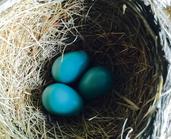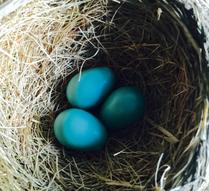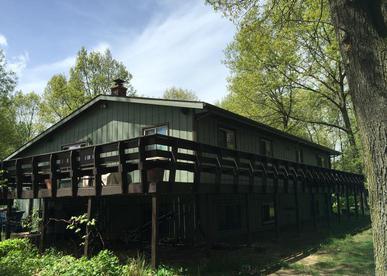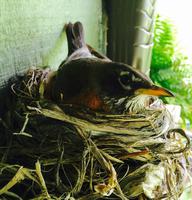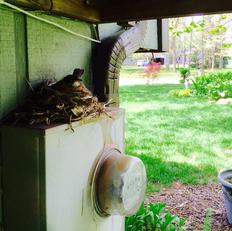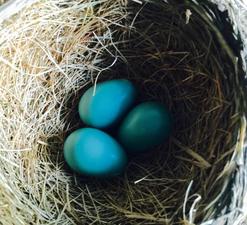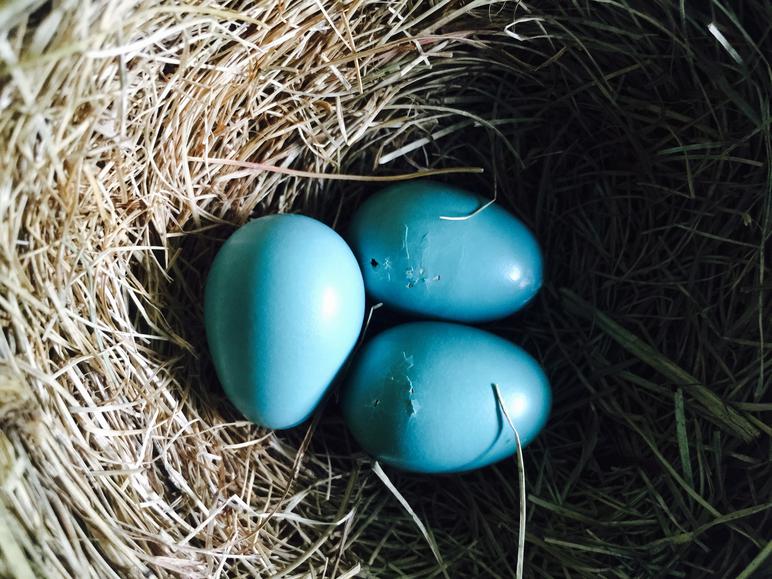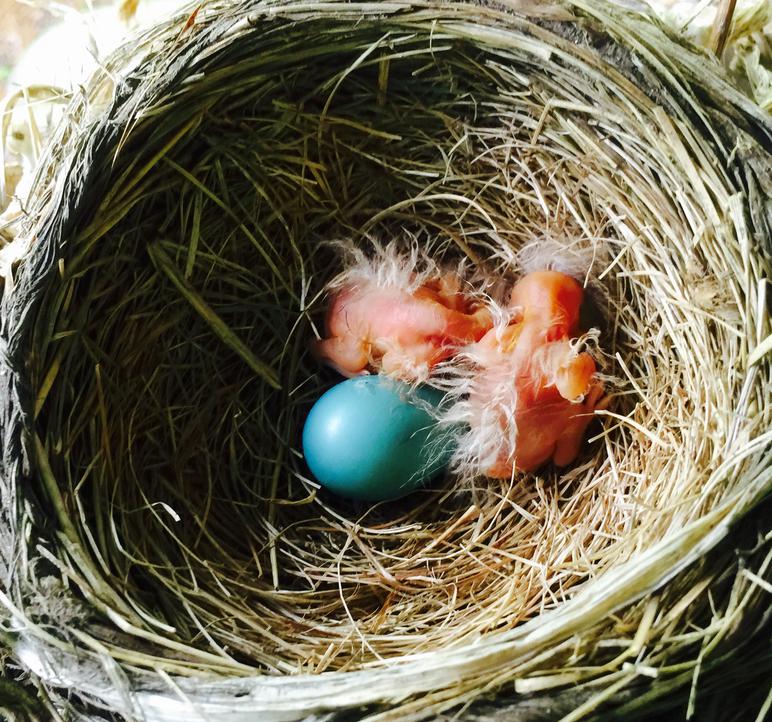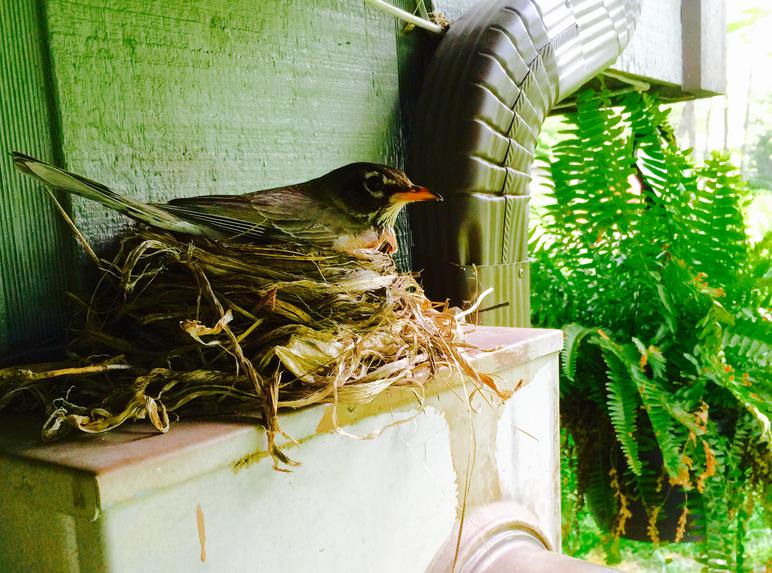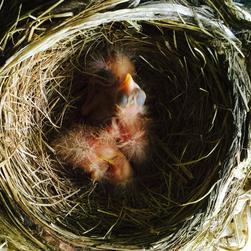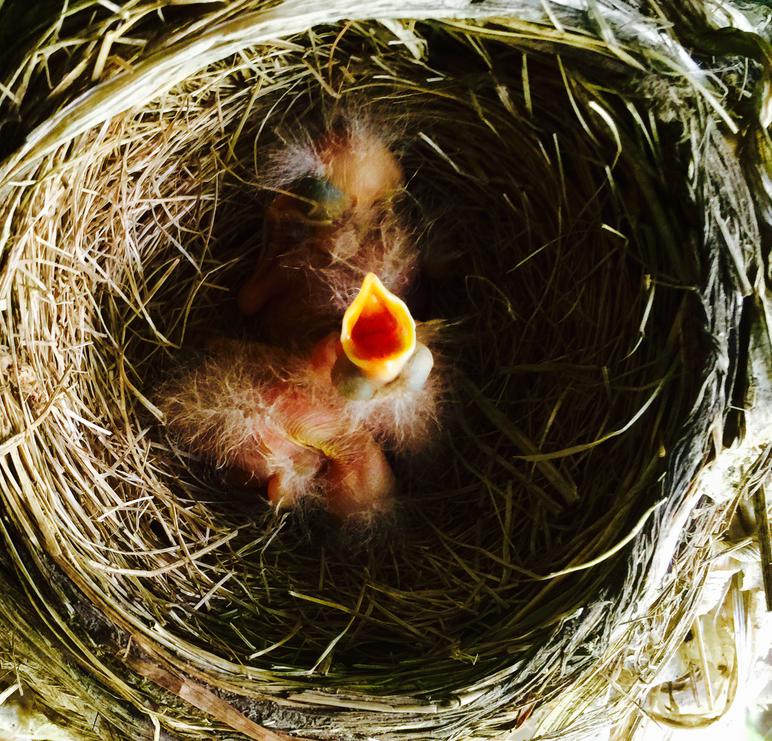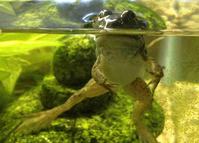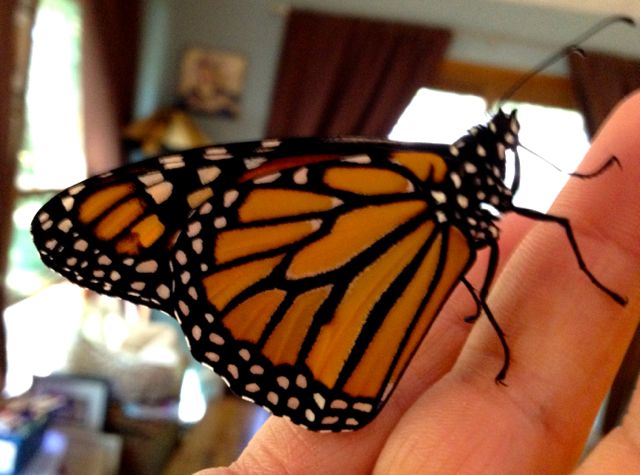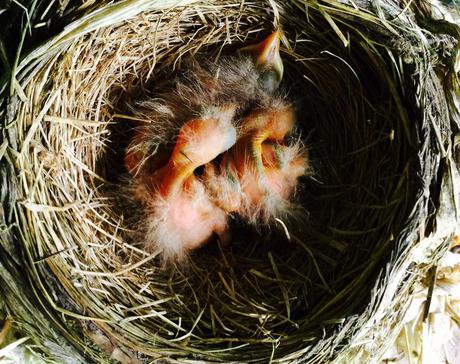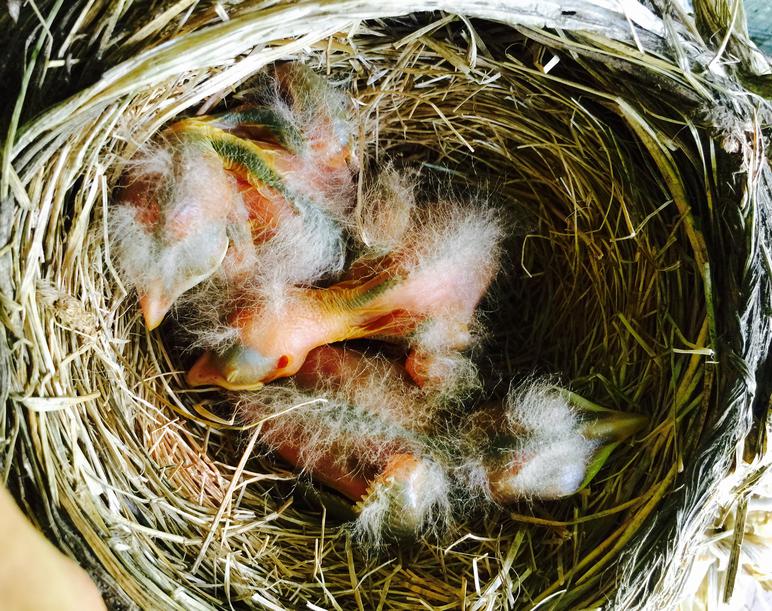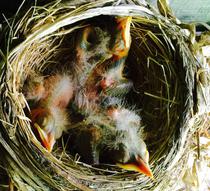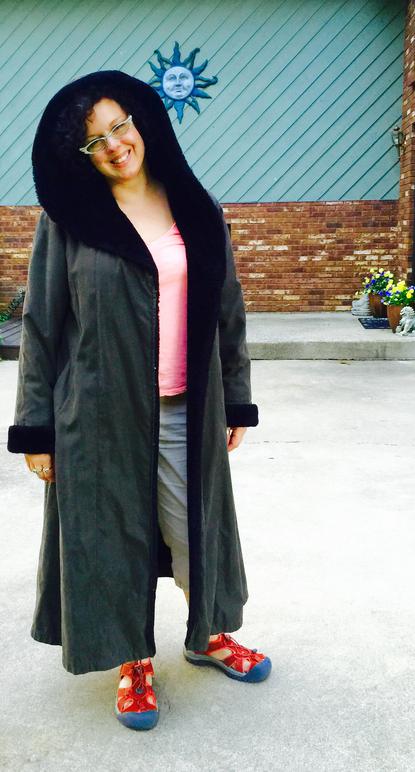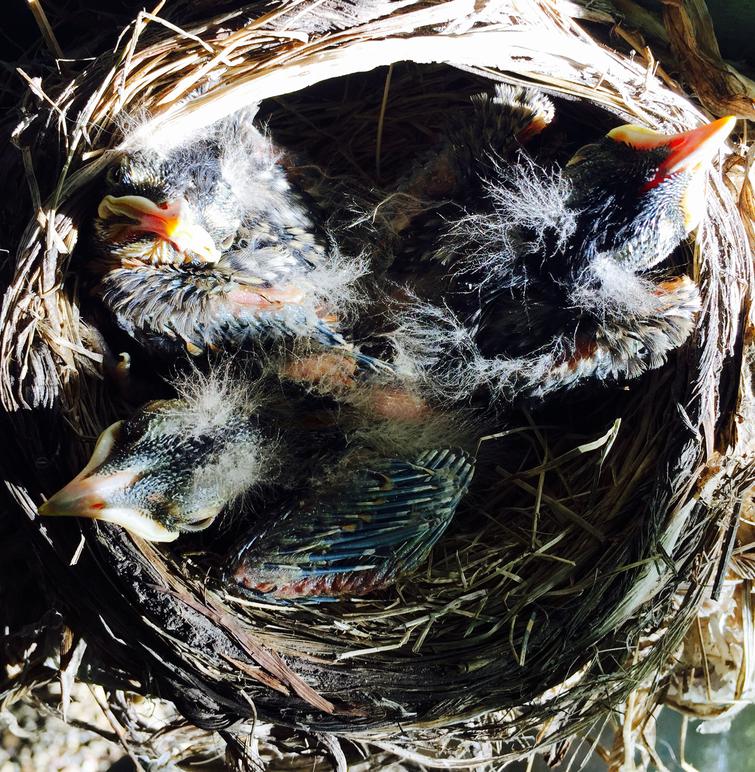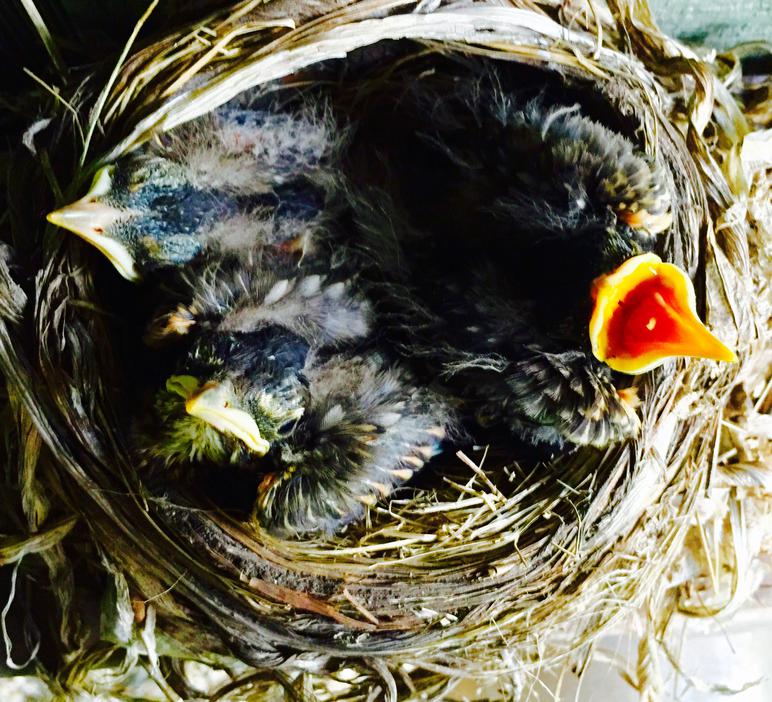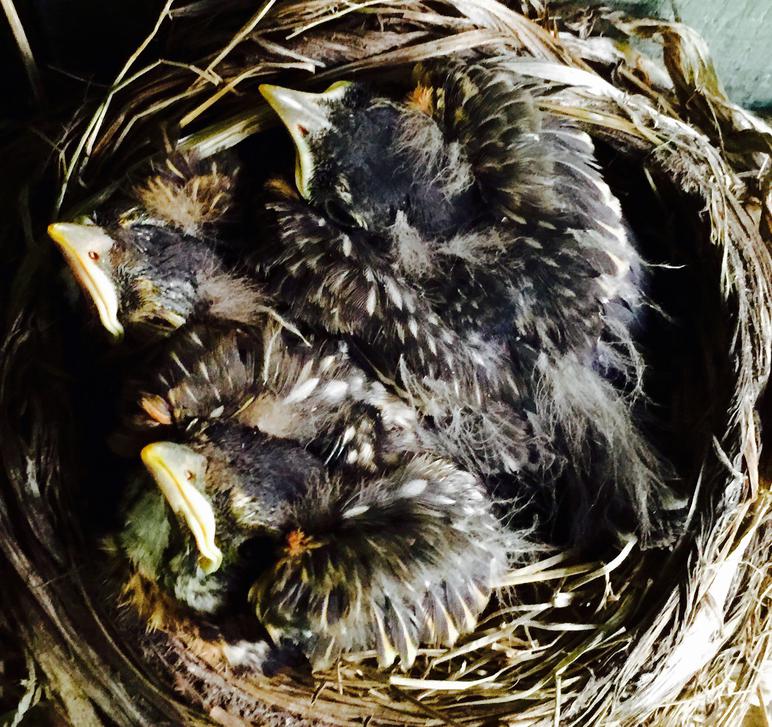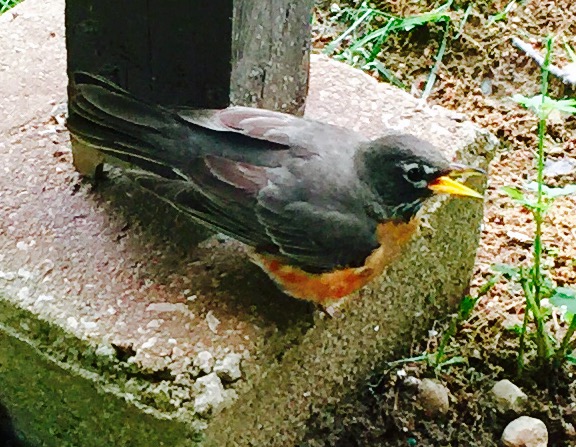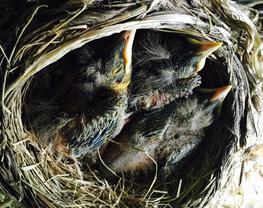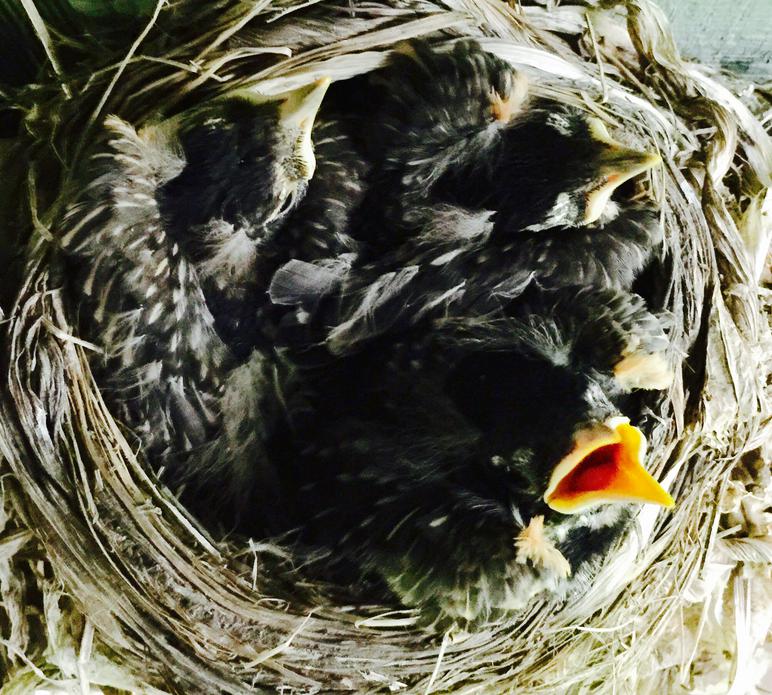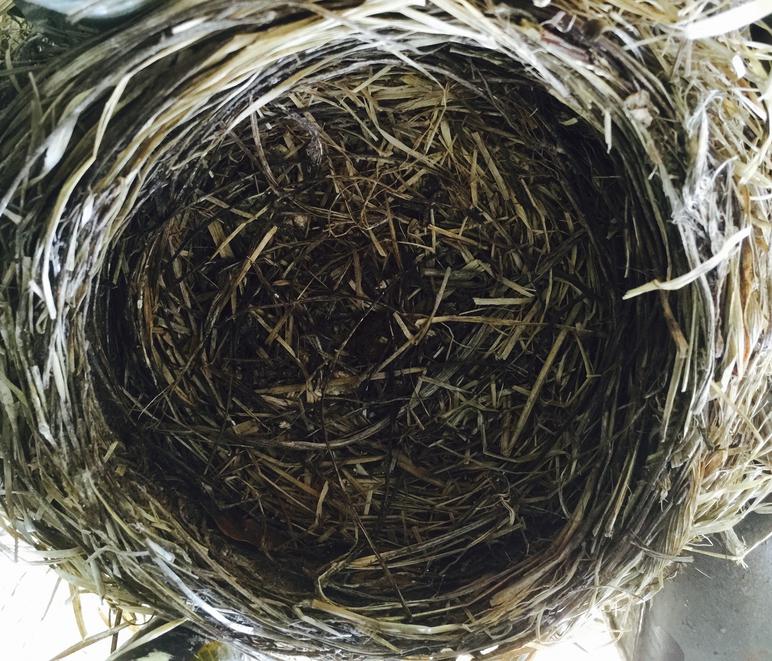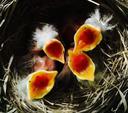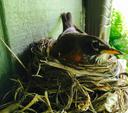 | ||||
American Robin Nestling Development
Photos of Baby Robins from Eggs to Fledgling
Wilma & Fred's Nest 2015
c
Article Summary: Photo record documenting the development of a brood of American robins, nesting under the backyard deck of a southwest Michigan home. This page features the first of Wilma's 2015 broods.
Every year American robins nest under the deck of our home. We watch nests succeed and fail, but have never documented development of the chicks. This spring, of 2015, we are photo-documenting two nests.
American Robin Chick Development: Wilma 2015
American robin Wilma's clutch of three eggs. She laid the first egg May 12, They begin hatching May 24th.
SPO VIRTUAL CLASSROOMS
 | ||||||
Page last updated 7/2015
Wilma & Fred's Brood
Wilma laid her first egg of the current clutch on Tuesday, May 12. Then laid an egg each day for the the next two days, finishing with her her third and last egg on May 14.
Clutch of Eggs
SCIENCE PHOTOS
Betty's nest
Wilma's nest
We are careful not to disturb the nest or chick, an do not spend much time at the nest. Just long enough to snap a photo.
Check back frequently, and Like Us on Facebook to follow the chicks development!
We have many photos of the two nests we are following. This page features Wilma & Fred's nest. Click the link below to learn about American robins and see photos of Betty & Barney's four nestlings!
American Robin
Nesting Facts
Scientific name:
Turdus migratorius
# eggs in clutch: 3 - 5
# clutches: 1 - 3
incubation of eggs:
~2 weeks
nestlings fledge:
~2 weeks
Wilma & Fred's eggs had all hatched 11 days after the last was laid. Their nestlings fledged 12 days after hatching.
Wilma & Fred's Nest
Under side portion of deck, facing north, 45 inches (114.3 cm) above the ground, built on top of the home's electric meter.
 | ||||
Young children are natural born scientists, full of curiosity! Join the at-home experiments and explorations of a scientist mom & her kids.
PAGE 2 < Back to Page 1
Many nests in this location have failed in the past. The nest is near a bird feeding area, and is very visible. We hung a Boston fern in front of the most exposed area of her nest, making it less visible. Wilma and Fred may be ferocious enough to brood a successful nest in this location!
Chicks Began Hatching!
5/25/15
11 days after last egg was laid.
Two Eggs Show Signs of Cracking
5/24/15
Put a hanging Boston fern next to Wilma's nest. Provides some cover on the most exposed side.
All Three Chicks Have Hatched
5/26/15 * Day 1
BULLFROG UPDATE!
Latest Tadpole News
2/3/2015
Sad news today. Lumpy, the little bullfrog we raised from a tadpole 2 years ago, died of unknown causes today.
Ribbit-In-Peace buddy!
Thanks for showing us how cool frogs are!
> See Lumpy's Story
on the Tadpole
 | ||||||
SPO is a FREE science education website. Donations are key in helping us provide this resource with fewer ads.
Please help!
(This donation link uses PayPal on a secure connection.)
Main Page
See our butterfly garden and the monarchs that complete part of their life cycle there. Learn how to attract Monarch Butterflies to your yard!
Day 2
5/27/15
Day 3 * 5/28/15
Wilma and Fred are always very serous about guarding their nest! Yesterday one of the dive bombed me and made contact, scratching my upper arm. Good job guys!
Wilma,
the fierce!
American robin female, Wilma, on nest. She and her mate, Fred, ferociously guard their brood.
Day 4
5/29/15
 | ||||||
HOME MICROBIOLOGY EXPERIMENT FROM SPO
Yes!
TSY agar with sample from dirty dishes on top (note bacterial colonies that grew), and sample from cleaned dishes on bottom.
Day 7
6/1/15
Day 8
6/2/15
Day 9
6/3/15
What To Wear When Monitoring Nest of
Aggressive Robin Parents
Wilma making alarm call
Day 6
5/31/15
Fred and Wilma very physically defend their nest, by biting and scratching. When I go to quickly take a picture of the nest everyday, I now wear a big hooded winter coat for protection.
Day 10
6/4/15
Day after chicks fledged
6-7-15
Missed taking photos of nest on June 6th and 7th. Did see Wilma on the nest June 6, and chicks were gone by morning of June 7.
Day 13
6/7/15
Chicks probably fledged in the afternoon / evening of June 6, since they were the right age on that date and the nest was clean and neat, so unlikely a predator got them before they fledged.
Good job Fred and Wilma!
You are a couple of fierce beasties!
More Information on the American Robin
- American Robin Page from Journey North
- American Robin, All About Birds from Cornell Lab of Ornithology
- Nest Watch from Cornell University
- American Robin, Audubon field Guide
Cornell Ornithology Lab recommends that, when monitoring a nest, you check it only every 3 - 4 days, to minimize disrupting the birds and avoid attracting predators. At SPO, we do check our nests more often, to get photos for science education. Visit the Cornell Ornithology Nest Watch website to learn how to observe nests safely.
Day 3
5/28/15
 | ||||
American Robin
Pages
American Robin
Alarm Call!
Listen to the alarm calls and attack from Wilma and Fred, as I approach to take photos of nest.
